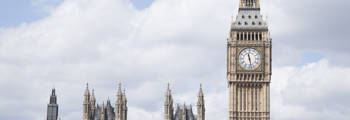11/12/2018
There’s been a broad welcome to the latest announcement by the Housing Secretary James Brokenshire to make high-rise buildings safer following the Grenfell fire disaster.
The Government is banning combustible materials on new high-rise homes and giving support to local authorities to carry out emergency remediation work on existing buildings, including those in the private sector.
The ban will provide helpful clarity for building owners who need to know what they can use to replace dangerous cladding and insulation and help keep buildings safer.
But in many ways, the announcement is a lost opportunity – and the new restrictions don’t go far enough.
From December 21 this year, combustible materials will be banned in external walls of flats, hospitals, residential care homes, school premises and student accommodation – but the ban will apply only to new constructions more than 18 metres tall (the traditional height at which firefighters can tackle a fire externally).
Other high-risk buildings, such as hotels and hostels, are specifically exempted from the legislation.
Combustible doors, windows and seals and thermal break materials are also not included, and the Government says it will keep this under review.
The architecture profession says the ban should apply to plasterboard, sheathing boards, insulation, spandrel panels, other cladding products and large systems that protrude from the buildings walls such as balconies.
The Government is already fully funding the replacement of unsafe cladding on existing social sector buildings above 18 metres.
Local authorities will also get the Government’s backing, including financial support, to carry out emergency work on affected private residential buildings with unsafe cladding.
They will have powers to recover the costs from building owners.
But not including new developments below 18 metres may be a loophole for some builders to use cheaper, more risky cladding and other combustible materials.
If it makes financial sense to build below 18 metres to accommodate “old” cladding, developers may exploit this loophole.
Cutting corners and taking advantage of any ambiguities in technical specifications to save money would be the wrong thing for the industry to do.
The new restrictions may also have unforeseen consequences for other regulated aspects of the construction industry, including the environment, waste and thermal insulation. It seems that many forms of combustible cladding are also excellent insulators, but this complete ban may have serious ramifications, with landlords facing huge building costs and unable to meet the latest energy performance regulations.
For now, the advice to owners is to take expert advice to ensure that their buildings comply with both the existing building regulations, the new ban on combustible materials announced by the housing secretary – and the spirit of efforts to make public and private sector buildings safer from further fire disasters.
This article was first published by 24Housing on 11 December 2018



